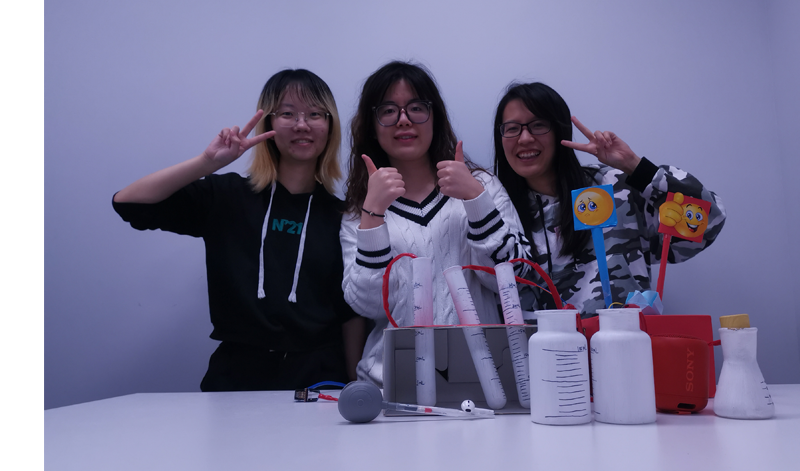Overall, the project is still very successful, because it was affirmed by most people when the final product was displayed. But there is still room for improvement throughout the design phase. Because we have more functions and greater flexibility in user participation (they may not follow the process to operate, such as pouring music from Flask back into the Test Tube/adding the sound from the Dropper directly to Flask), At the current design stage, the user can only operate according to the designed use flow, otherwise the system may not recognize the user's operation. In addition, it is also because the content of the project is complicated. In the design stage, we put a lot of energy into how to rationalize and unify the processes and operations. There is a lack of research on user experience (although we have done some user research. The amount of data we have collected is not sufficient). Research on the user is very important, because it determines whether the product is accepted by the user and the user's preference for the product.
In addition to the improvements at the design stage, there are also areas for improvement in the final product, such as the use of wires and sensors. According to user feedback, the Test Tube cannot be in contact with the dropper during the operation of a regular chemical experiment. However, in order to perform the transmission function, we use a pressure sensor on the Test Tube. The transmission function is triggered when the user touches the inner wall of the Test Tube while holding the Dropper. The operation is obviously inconsistent with the operation of chemical experiments and needs to be improved. Also, we should reduce the use of threads as much as possible, such as the wires in Droppers and Test Tubes. The presence of the wires not only lowers the aesthetic standards but also restricts the user's operation (for example, the presence of the threads in the Dropper prevents the user from holding the Dropper to go outdoors), although we have changed the appearance of the wires (After finishing all the threads, tie them into a bunch with tape).
Although Sound Lab still has many problems, it fits the studio theme. Our products are interesting and have relatively high requirements for users' innovation skills.
According to the feedback from the showcase, users feel that it is highly playable. It is a very novel idea to edit music with a combination of sound and experimental equipment. And the process of music creation can really keep them focused, thereby reducing their sensitivity to things that make them feel stressed. In addition, the dim environment and colorful lighting effects make them feel very relaxed.












